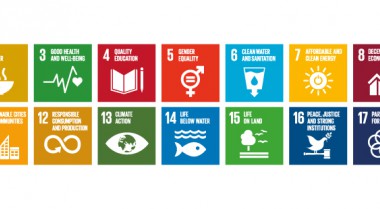
Implementing the UN Community Engagement Guidelines: Turning Words into Action
In August 2020, the UN published the Community Engagement Guidelines on peacebuilding and sustaining peace. The Guidelines support UN field presences in developing context-specific community engagement strategies on peacebuilding and sustaining peace.
But one question remains: How can local peacebuilders utilise the Guidelines to advance their own peacebuilding goals?
Our member Justine Kwachu Ngum Kumche, local peacebuilder and Executive Director of WAA Cameroon, has been able to leverage the Guidelines and turn them into action in the process of building a relationship with the UN field presence on the ground.
In this interview, Justine shares how she used the Guidelines to strengthen her engagement with the UN and what a meaningful and intentional partnership with the UN could look like in 2021.
How did you start engaging with the UNDP field presence in Cameroon?
I connected with the UN Peace and Development Advisor (PDA) in Cameroon after an online meeting organized by GPPAC in July 2020. The space and access that GPPAC Global Secretariat provides for local peacebuilders, has been critical to raising awareness about our work. Because of the inclusive approach that GPPAC pursues, global-level meetings always include relevant regional and national partners for multi-stakeholder dialogue.
However, the most important step has been done by the PDA herself. The Peace and Development Advisor in Cameroon has been proactive in reaching out to GPPAC seeking dialogue with local peacebuilders. She immediately inquired to visit the WAA office braving the odds of the Covid-19 pandemic. This to me was quite remarkable showing her humility as a UN staff, an indication of the need to engage on the ground.
Why is building a working relationship with the UN important? How did you benefit from it?
Building relationships is primordial especially in harnessing common goals and objectives. Doing this particularly with the UN which is mostly looked upon as non-approachable is much appreciated. In 2019, GPPAC enhanced WAA’s connection with the UN through our engagement in the VNR process to ensure CSOs perspectives in assessing the level of implementation of SDG 16+ on Peaceful, Just and Inclusive Societies. This created an entry point to contribute to the government report presented at the High-Level Political Forum. We also counsel the UN on different areas of expertise upon request.
However, the partnership established with the PDA is different. The first meeting with the PDA provided an opportunity for me to present GPPAC network’s work on conflict prevention and peacebuilding, especially in crisis regions of North-West and South-West Cameroon. Using our network approach, we conducted a mapping of local peacebuilders' expertise and were able to organize the second meeting with a variety of local experts working in the field. Now, we meet regularly. Not upon request, but to provide ongoing support to each other’s work and building a strong foundation for peace in Cameroon.
With that said, building a working relationship with the UN is mutually beneficial, especially as we seek common grounds and platforms to push for locally-led alternatives to sustaining peace in Cameroon.
What impact do you see from working with the UN in 2020?
Working with the UN in 2020 established the basis of exploring opportunities for building local peace structures together. With the PDA, a platform for local peacebuilding CSOs is now established for effective and efficient contribution to peace processes in Cameroon.
While the work is yet to be done, the future looks more positive now.
How can you and the UN work together in 2021?
I look forward to seeing more concrete steps going forward.
WAA and the UN should advance a working partnership that will take our peacebuilding efforts on the ground to the level where genuine and direct dialogue with warring parties will lead to a ceasefire in the two Anglophone regions of Cameroon.
WAA has deep-rooted experience working with the grassroots especially with key actors within traditional institutions including the Queen for Peace Initiative established to amplify the voices of local women through the wives of traditional leaders who have been trained by WAA to play a key role in community mediation. WAA has also equally established Youth Think Tank Clubs for Peace for young people to advance UN Resolution 2250 at the local level. We know how to engage youth in peacebuilding, giving them alternatives to guns. We do this together with the GPPAC Global Secretariat and the German Federal Foreign Office Funds by ifa (institute f ü r Auslandsbeziehungen) Funding Program zivik. This could be done on a greater scale.
Understanding the UN limitations in terms of capacities and funding, the UN could support our efforts in these areas by providing political support, technical resources and strategic support, among other resources to advance this work.
When local communities have this support, the peace outcomes cannot be overestimated.


